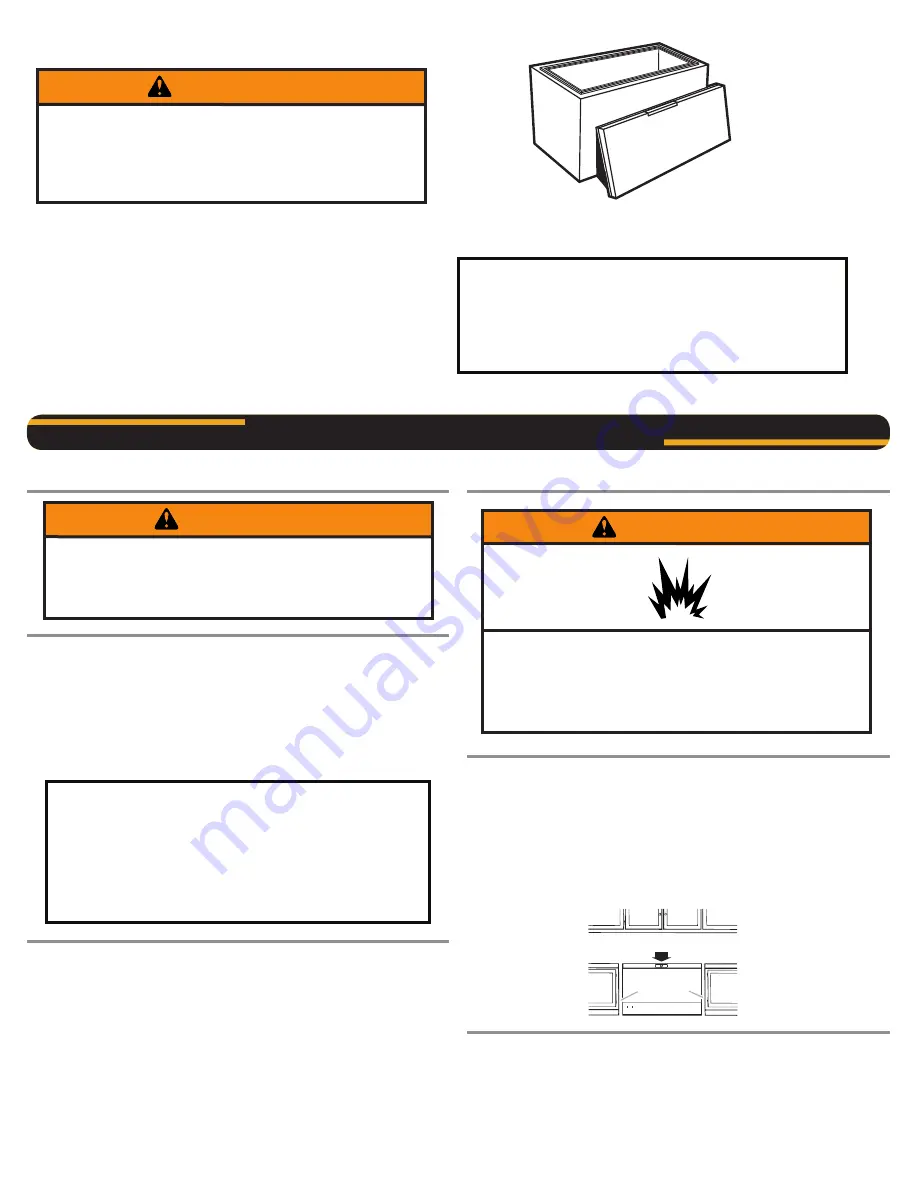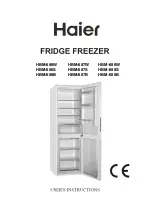
2
PROPER DISPOSAL OF YOUR OLD
FREEZER OR REFRIGERATOR
WARNING
Suffocation Hazard
Remove doors or lid from your old freezer or
refrigerator.
Failure to do so can result in death or brain damage.
IMPORTANT: Child entrapment and suffocation are not problems
of the past. Junked or abandoned freezers or refrigerators are still
dangerous even if they will sit for “just a few days.”
BEFORE YOU THROW AWAY YOUR OLD FREEZER OR
REFRIGERATOR REMOVE THE DOORS OR LID.
Important information to know about disposal of
refrigerants:
Dispose of freezer in accordance with Federal and Local
regulations. Refrigerants must be evacuated by a licensed,
EPA certified refrigerant technician in accordance with
established procedures.
INSTALLING YOUR FREEZER
Unpacking
Remove Packaging Materials
J
Remove tape and glue residue from surfaces before turning on the
freezer. Rub a small amount of liquid dish soap over the adhesive
with your fingers. Wipe with warm water and dry.
J
Do not use sharp instruments, rubbing alcohol, flammable fluids,
or abrasive cleaners to remove tape or glue. These products can
damage the surface of your freezer. For more information, see the
front cover for safety instructions.
Clean Before Using
After you remove all of the packaging materials, clean the inside of
your freezer before using it. See the cleaning instructions in “Caring for
Your Freezer.”
Location Requirements
Ventilation and Clearance
J
Keep flammable materials and vapors, such as gasoline, away
from freezer.
J
Do not cover the freezer with items such as blankets, sheets,
tablecloths, etc. This reduces air circulation.
J
Allow at least a 3" (7.5 cm) clearance on both sides of the freezer
and 2" (5 cm) between the back of the freezer and the wall. Leave
room above the freezer to open the lid.
Temperature
Your freezer operates most efficiently when located in an area where
the temperature is normally between 32°F (0°C) and 110°F (43°C).
Place your freezer in a location where the temperature will fall between
the low and high recommended temperature.
WARNING
Excessive Weight Hazard
Use two or more people to move and install freezer.
Failure to do so can result in back or other injury.
When Moving Your Freezer:
Your freezer is heavy. When moving the freezer for cleaning
or service, be sure to cover the floor with cardboard or
hardboard to avoid floor damage. Always pull the freezer
straight out when moving it. Do not wiggle or “walk” the
freezer when trying to move it, as floor damage could occur.
WARNING
Explosion Hazard
Keep flammable materials and vapors, such as
gasoline, away from freezer.
Failure to do so can result in death, explosion, or fire.
2" (5 cm)
3" (7.5 cm)



































